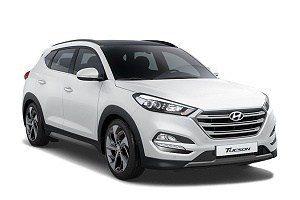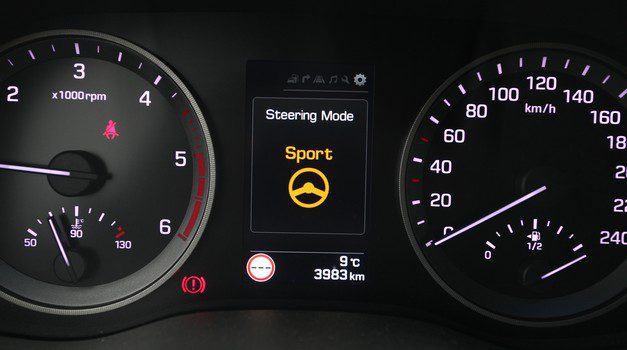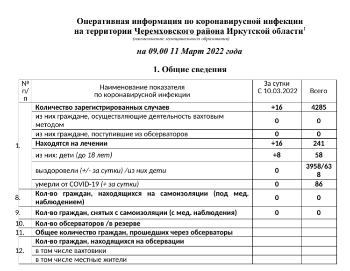
Hyundai Tucson 1.7 CRDi 2WD Impression
Content
To replace the successful generation of Hyundai's first small crossover, the name has also changed. As it turns out, naming with just a few letters and numbers doesn't have a long history. Last but not least, it was easier for us to imagine which cars are Accent, Sonata and Tucson.
Download PDF test: Hyundai Hyundai Tuscon 1.7 CRDi 2WD Impression

Sasha Kapetanovich
Thus, Tucson is bringing new ambitions to Hyundai again. In this already well-established class, we would like to take the next step forward. For Hyundai, the iX35 was an important piece of the brand's European exit mosaic. This crossover has accounted for a quarter of their sales in recent years. The reason is simple: the iX35 has an attractive design and is spiced with reliable technology. In fact, our experience with him was average, in the sense that he did not stand out in anything, but he knew everything so well that the owners of these cars were happy with the purchase. It was also the first Hyundai to receive a new design line, and this completely changed the look of the brand. The Tucson is now the first at Hyundai to be helped by the styling change from the head of design for the entire Korean Hyundai-Kia group, German Peter Schreyer. Until now, he was only responsible for the creation of the small Kie brand. He was named group vice president a few years ago and the repercussions will be visible in the other brand as well. I can say that with Peter's steps, the Tucson has become a little more serious and mature car, or if most customers like it more, we will have to wait for their response or their willingness to open their wallets. In addition to the new design, the Tucson also received new technology. This has changed significantly since 2010, when the ix35 began its journey to customers. The Tucson redesign seems significant enough to ensure that it continues to successfully conquer markets. Let's start describing the new items outside. Separately, it is worth noting the purchase of the most expensive equipment of the Impression line - LED headlights. Even lower equipment packages have the rest of the LED equipment (daytime running lights, turn signals in the door mirrors and taillights). The body is longer (along with the wheelbase), which is also felt in the spaciousness of the cabin. Now in the back seat there is even more space for passengers (also for knees), the trunk also seems very spacious (513 liters). It also has less under-floor space for small items such as a safety triangle and comfortable first aid that prevents these items from moving awkwardly when driving on winding roads. This solution also has a downside (for some) because the Tucson doesn't have a replacement wheel as standard. The planners also missed an opportunity to do their part to improve flexibility by allowing the rear seat to move longitudinally. It is commendable, however, that the rear seat backrests can be folded down to create a large and flat trunk for 1.503 liters of luggage. The driving experience is pleasant. While the appearance of the lining tries to make the most noble impression, it is also true that this is difficult to achieve with conventional man-made materials. The ergonomics of the room can be praised more. With a new large screen (touchscreen) in the center of the dashboard, Hyundai has also retained most of the control buttons in this infotainment system. But even those who use the usual buttons - to control heating, ventilation and air conditioning - will also be satisfied. In a suitable location, there are two outlets for charging different clients with 12V outputs and for USB and AUX. The presence of suitable and large enough spaces for small items is satisfactory. Slightly worse was the driver's seat, which after several hours of driving is no longer as convincing as at the beginning of the journey. It is worth noting the very good visibility from the car, which is no longer so characteristic of modern design dynamically redesigned crossover bodies. All-round visibility is good (Hyundai boasts that the first pillar is thinner than it has been on the ix35 so far), even halfway when parking in reverse we can rely on what we see. Less can be said about the rear view camera. It may be the best tool with changing route lines that we follow as we move the steering wheel, but they cannot be relied upon and reversing must always be controlled with an additional rear view. The engine and transmission of our test Tucson were what most customers would choose - front-wheel drive and a smaller 1,7-liter turbodiesel and, of course, a six-speed manual transmission. A front-wheel drive-only crossover is now a perfectly normal combination, although at first glance it seems strange. That this is not the case is well proven (also) by Tucson. As the possibilities for driving on slippery and dirt roads are reduced, front-wheel drive is sufficient. However, many people like the higher driver position (and good visibility and, as a result, more room). The Hyundai engine is not overcharged, and at 115 horsepower on paper, it is moderately powerful. But it works in almost all conditions, thanks largely to the good torque available at just above idle. At the same time, it seems convincing enough in terms of acceleration as well as flexibility. Surprise you with maintaining the maximum (permitted) speed on long ascents on the highway. However, the driver is a little disappointed when the watch does not confirm the impression of a convincingly fast acceleration during measurements. Also in terms of fuel consumption, we expect a more moderate thirst from the front-wheel drive Hyundai (also in our range of norms). Therefore, the chassis performance is quite satisfactory. It deserves praise both in terms of comfort (where the tires are not so low cut) and in terms of position on the road, and the electronic stabilization program is well balanced and provides greater driving dynamics in corners. However, the reference to electronic safety devices should criticize Hyundai's add-on package policy. The Collision Avoidance System (Hyundai abbreviated AEB) is now a well-established device and, thanks to its installation in Tucson, Hyundai also earned five stars in the EuroNCAP test. But the owner of Tucson will have to buy this system (for 890 euros), despite buying the richest (and most expensive) equipment. It will also come with a blind spot monitoring system (BDS) and a chrome mask in a package bearing the eloquent Safety name. That this kind of safety still needs to be bought is not in honor of Hyundai! Well, it should be said that choosing any color other than basic blue is optional (white for 180 euros). Despite such a Hyundai toy, the Tucson is still a bargain for the price, especially given its relatively rich package.
Tomaž Porekar, photo: Saša Kapetanovič
Hyundai Tuscon 1.7 CRDi 2WD Impression
Basic data
| Sales: | Hyundai Auto Trade Ltd. |
|---|---|
| Base model price: | 19.990 € |
| Test model cost: | 29.610 € |
| Power: | 85kW (116 KM) |
| Acceleration (0-100 km / h): | 13,2 with |
| Maximum speed: | 176 km / h |
| Mixed flow ECE: | 5,7l / 100km |
| Guarantee: | General warranty 5 years unlimited mileage, 5 years warranty on mobile devices, 5 years warranty on varnish, 12 years warranty against rust. |
| Systematic review | Service interval 30.000 km or two years. km |
Cost (up to 100.000 km or five years)
| Regular services, works, materials: | 705 € |
|---|---|
| Fuel: | 6.304 € |
| Tires (1) | 853 € |
| Loss of value (within 5 years): | 8.993 € |
| Compulsory insurance: | 2.675 € |
| CASCO INSURANCE (+ B, K), AO, AO + | 6.885 ( |
| Calculate the cost of auto insurance | |
| Buy up | 26.415 € 0,26 (value for XNUMX km: XNUMX € / km) €) |
Technical information
| engine: | 4-cylinder - 4-stroke - in-line - turbodiesel - front mounted transversely - bore and stroke 77,2 × 90,0 mm - displacement 1.685 cm3 - compression 15,7:1 - maximum power 85 kW (116 hp .) at 4000 rpm - average piston speed at maximum power 12,0 m / s - specific power 50,4 kW / l (68,6 l. Exhaust turbocharger - charge air cooler. |
|---|---|
| Energy transfer: | engine-driven front wheels - 6-speed manual transmission - gear ratio I. 3,769 2,040; II. 1,294 hours; III. 0,951 hours; IV. 0,723; V. 0,569; VI. 4,188 - Differential 1 (2nd, 3rd, 4th, 5th, 6th, 6,5th, Reverse) - 17 J × 225 rims - 60/17 R 2,12 tires , rolling circumference XNUMX m. |
| Capacity: | top speed 176 km/h – 0-100 km/h acceleration 12,4 s – average fuel consumption (ECE) 4,6 l/100 km, CO2 emissions 119 g/km. |
| Transportation and suspension: | crossover - 5 doors, 5 seats - self-supporting body - front single suspension, spring legs, three-spoke cross rails, stabilizer - rear multi-link axle, coil springs, telescopic shock absorbers, stabilizer - front disc brakes (forced cooling), rear discs, ABS, electric parking brake on the rear wheels (switching between seats) - steering wheel with rack and pinion, electric power steering, 2,7 turns between extreme points. |
| Mass: | empty vehicle 1.500 kg - permissible total weight 2.000 kg - permissible trailer weight with brake: 1.400 kg, without brake: 750 kg - permissible roof load: 100 kg. |
| External dimensions: | length 4.475 mm – width 1.850 mm, with mirrors 2.050 1.645 mm – height 2.670 mm – wheelbase 1.604 mm – track front 1.615 mm – rear 5,3 mm – ground clearance XNUMX m. |
| Inner dimensions: | longitudinal front 860-1.090 mm, rear 650-860 mm - front width 1.530 mm, rear 1.500 mm - head height front 940-1.010 mm, rear 970 mm - front seat length 500 mm, rear seat 460 mm - luggage compartment 513 - 1.503 370 l – handlebar diameter 62 mm – fuel tank XNUMX l. |
Our measurements
| T = 6 ° C / p = 1.023 mbar / rel. vl. = 55% / Tires: Continental Conti Premium Contact 5/225 / R 60 V / Odometer status: 17 km | |
| Acceleration 0-100km: | 13,2s |
|---|---|
| 402m from the city: | 18,1 years ( 123 km / h) |
| Braking distance at 130 km / h: | 61,9m |
| Braking distance at 100 km / h: | 38,4m |
| AM table: | 40m |
| Noise at 90 km / h in 6rd gear | 59dB |
Hyundai Tuscon 1.7 CRDi 2WD Impression
Basic data
| Sales: | Hyundai Auto Trade Ltd. |
|---|---|
| Base model price: | 19.990 € |
| Test model cost: | 29.610 € |
| Power: | 85kW (116 KM) |
| Acceleration (0-100 km / h): | 13,2 with |
| Maximum speed: | 176 km / h |
| Mixed flow ECE: | 5,7l / 100km |
| Guarantee: | General warranty 5 years unlimited mileage, 5 years warranty on mobile devices, 5 years warranty on varnish, 12 years warranty against rust. |
| Systematic review | Service interval 30.000 km or two years. km |
Cost (up to 100.000 km or five years)
| Regular services, works, materials: | 705 € |
|---|---|
| Fuel: | 6.304 € |
| Tires (1) | 853 € |
| Loss of value (within 5 years): | 8.993 € |
| Compulsory insurance: | 2.675 € |
| CASCO INSURANCE (+ B, K), AO, AO + | 6.885 ( |
| Calculate the cost of auto insurance | |
| Buy up | 26.415 € 0,26 (value for XNUMX km: XNUMX € / km) €) |
Technical information
| engine: | 4-cylinder - 4-stroke - in-line - turbodiesel - front mounted transversely - bore and stroke 77,2 × 90,0 mm - displacement 1.685 cm3 - compression 15,7:1 - maximum power 85 kW (116 hp .) at 4000 rpm - average piston speed at maximum power 12,0 m / s - specific power 50,4 kW / l (68,6 l. Exhaust turbocharger - charge air cooler. |
|---|---|
| Energy transfer: | engine-driven front wheels - 6-speed manual transmission - gear ratio I. 3,769 2,040; II. 1,294 hours; III. 0,951 hours; IV. 0,723; V. 0,569; VI. 4,188 - Differential 1 (2nd, 3rd, 4th, 5th, 6th, 6,5th, Reverse) - 17 J × 225 rims - 60/17 R 2,12 tires , rolling circumference XNUMX m. |
| Capacity: | top speed 176 km/h – 0-100 km/h acceleration 12,4 s – average fuel consumption (ECE) 4,6 l/100 km, CO2 emissions 119 g/km. |
| Transportation and suspension: | crossover - 5 doors, 5 seats - self-supporting body - front single suspension, spring legs, three-spoke cross rails, stabilizer - rear multi-link axle, coil springs, telescopic shock absorbers, stabilizer - front disc brakes (forced cooling), rear discs, ABS, electric parking brake on the rear wheels (switching between seats) - steering wheel with rack and pinion, electric power steering, 2,7 turns between extreme points. |
| Mass: | empty vehicle 1.500 kg - permissible total weight 2.000 kg - permissible trailer weight with brake: 1.400 kg, without brake: 750 kg - permissible roof load: 100 kg. |
| External dimensions: | length 4.475 mm – width 1.850 mm, with mirrors 2.050 1.645 mm – height 2.670 mm – wheelbase 1.604 mm – track front 1.615 mm – rear 5,3 mm – ground clearance XNUMX m. |
| Inner dimensions: | longitudinal front 860-1.090 mm, rear 650-860 mm - front width 1.530 mm, rear 1.500 mm - head height front 940-1.010 mm, rear 970 mm - front seat length 500 mm, rear seat 460 mm - luggage compartment 513 - 1.503 370 l – handlebar diameter 62 mm – fuel tank XNUMX l. |
Our measurements
| T = 6 ° C / p = 1.023 mbar / rel. vl. = 55% / Tires: Continental Conti Premium Contact 5/225 / R 60 V / Odometer status: 17 km | |
| Acceleration 0-100km: | 13,2s |
|---|---|
| 402m from the city: | 18,1 years ( 123 km / h) |
Overall rating (346/420)
Improved looks and updated technology are good things, but the policy of additional payments for security equipment is not exactly an example.
Exterior (14/15)
The appearance is convincing, the next level is already quite solid compared to the previous generation with a different name (iX35), it also satisfies the precision of workmanship.
Interior (103/140)
Solid space and ease of use with a fairly large trunk. It offers a lot in the richest version of the equipment, but some of the accessories already installed on Hyundai can be found in vain.
Engine, transmission (57
/ 40)In Hyundai, the engine does not accelerate to overspeed, but is therefore very flexible. The rest of the chassis is more convincing than the steering gear.
Driving performance (63
/ 95)For a car with such a high body, it behaves well on the road and is also reasonably comfortable. Of course, sometimes the front drive wheels can also slip.
Performance (25/35)
There is still enough power for Slovenian motorways, but here the joy soon dies down, it seems, with acceleration. It seems to be fast, but the clock says otherwise.
Security (35/45)
For 890 euros we would have to buy an AEB (Anti-Collision System) and our experience would be completely different, so despite 5 stars on the EuroNCAP test in the tested version of the equipment, this is not satisfying.
Economy (49/50)
Fuel consumption is not entirely exemplary, but in the assessment it is replaced by an excellent guarantee.
We praise and reproach
utility
rich equipment for impressions
good work of the start-stop system
full warranty included in the base price
pleasant driver's seat and ergonomics
collision avoidance surcharge
significant difference between normal consumption and consumption in our range of norms
poor picture from the rear view camera
restriction sign recognition camera also recognizes signs on side roads
